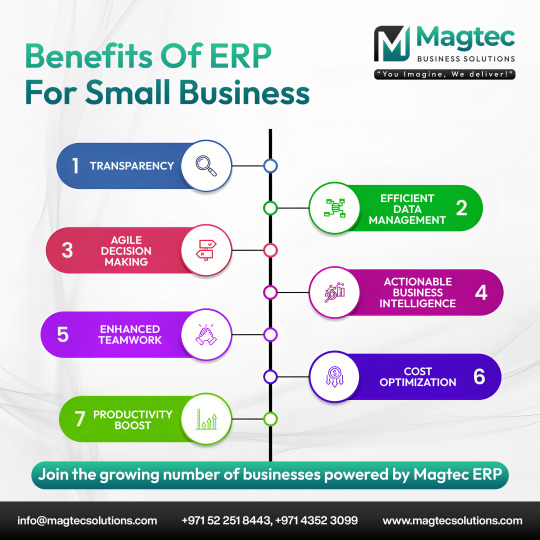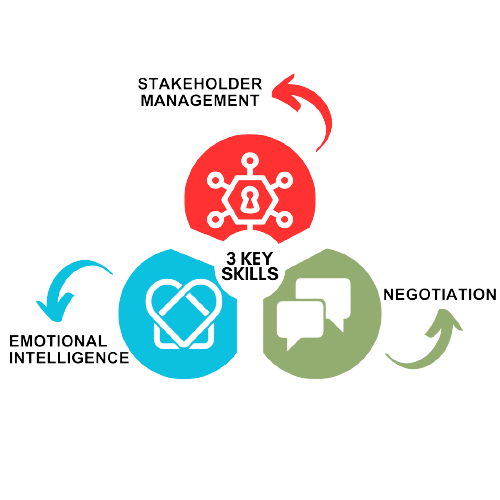#CostOptimization
Explore tagged Tumblr posts
Text

Magtec ERP can help your small business achieve transparency, efficient data management, agile decision making, actionable business intelligence, enhanced teamwork, cost optimization, and productivity boost. Join the growing number of businesses powered by Magtec ERP!
#magtec#erp#smallbusiness#benefitsoferp#transparency#efficientdatamanagement#agiledecisionmaking#actionablebusinessintelligence#enhancedteamwork#costoptimization#productivityboost#businessgrowth#businesssolutions#magtecsolutions#erpforsmallbusiness#smes#entrepreneurship#businessowner#businesstips#businessadvice#businessdevelopment#businessconsulting#businesscoach#smallbusinessowner#businessautomation#digitaltransformation
2 notes
·
View notes
Text
Streamlining Efficiency and Customer Satisfaction: Call Center Setup and Management Solutions
In today's fast-paced business landscape, establishing an effective call center is crucial for organizations aiming to provide exceptional customer service. A well-designed call center setup, supported by robust management solutions, can significantly enhance operational efficiency, improve customer satisfaction, and boost overall business success. This article delves into the key components of a successful call center setup and explores innovative management solutions that can optimize performance and ensure customer-centric operations.

1. Strategic Planning and Infrastructure:
A successful call center setup begins with meticulous strategic planning. Understanding the organization's objectives, target audience, and service requirements is essential for designing an efficient infrastructure. Considerations such as call volume projections, necessary hardware and software, telephony systems, and network infrastructure must be carefully assessed. Advanced technologies like cloud-based solutions can offer scalability, flexibility, and cost-effectiveness, allowing businesses to adapt to changing demands.
2. Workforce Management:
A well-managed workforce is the backbone of any call center. Efficiently scheduling agents, forecasting call volumes, and accurately estimating staffing needs are crucial for maintaining service levels and minimizing wait times. Workforce management solutions leverage sophisticated algorithms to optimize scheduling, taking into account historical data, employee skills, and service level agreements. These tools enable organizations to strike a balance between customer demand and agent availability, enhancing productivity and reducing costs.
3. Quality Monitoring and Training:
To ensure consistent service quality, call centers must invest in robust quality monitoring and training programs. Implementing call recording and evaluation systems enables supervisors to assess agent performance, identify areas for improvement, and deliver targeted coaching and training. Real-time monitoring tools provide immediate feedback, allowing supervisors to intervene and guide agents during customer interactions. Continuous training programs enhance agent knowledge, soft skills, and product expertise, ultimately leading to enhanced customer satisfaction.
4. Omnichannel Integration:
Modern call centers must embrace omnichannel communication to cater to customers' evolving preferences. Integrating multiple channels, such as voice, email, chat, social media, and self-service portals, enables seamless interactions across platforms. A unified agent desktop interface and intelligent routing systems direct inquiries to the most suitable agents, ensuring consistent service delivery regardless of the channel. Omnichannel integration improves customer convenience, reduces resolution times, and fosters a personalized and consistent customer experience.
5. Analytics and Performance Metrics:
Data-driven insights play a pivotal role in optimizing call center operations. Advanced analytics tools can track key performance metrics, such as average handling time, first call resolution, customer satisfaction scores, and agent productivity. Analyzing this data helps identify operational bottlenecks, gauge customer sentiment, and make informed decisions. Predictive analytics can even anticipate customer needs, allowing agents to proactively address concerns and improve overall service levels.
6. Continuous Improvement and Feedback Loops:
A culture of continuous improvement is vital for the long-term success of any call center. Regularly seeking feedback from customers and agents alike helps identify pain points and areas of improvement. Employee engagement programs, feedback mechanisms, and recognition initiatives create a positive work environment and motivate agents to deliver exceptional service. By fostering a feedback loop, call centers can adapt to changing customer expectations, refine processes, and innovate to stay ahead in a competitive market.
Conclusion:
Setting up and managing a call center involves a multifaceted approach that blends strategic planning, technology implementation, and effective management solutions. By prioritizing infrastructure, workforce management, quality monitoring, omnichannel integration, analytics, and continuous improvement, businesses can establish customer-centric call centers that drive operational efficiency and enhance customer satisfaction. Embracing innovative solutions and staying attuned to evolving industry trends will position organizations for success in an increasingly competitive business landscape.
Click here to check my service on Fiverr
Source:
#CallCenterSetup#CallCenterManagement#CustomerService#ContactCenter#CustomerExperience#Outsourcing#BusinessSolutions#CustomerSupport#ServiceManagement#InboundCallCenter#OutboundCallCenter#VirtualCallCenter#OmnichannelSupport#CRMIntegration#AgentTraining#EfficiencyImprovement#QualityAssurance#PerformanceMetrics#CostOptimization#TechnologyIntegration#WorkforceManagement#Analytics#ProcessImprovement#CustomerSatisfaction#ServiceLevelAgreement
8 notes
·
View notes
Text
Cloud Migration Made Easy with Simple Logic☁️
🔄 Risk Free Data Transfer
Migrate workloads with zero downtime
🌍 Multi Cloud & Hybrid Support
Seamless integration across AWS, Azure, and GCP
🔒 Security First Approach
Ensure compliance and data protection during migration
💰 Cost Optimization Strategies
Maximize cloud efficiency while minimizing expenses
Simplify Your Cloud Journey Today✨
📧 Email: [email protected]
📞 Phone: +91 86556 16540
To know more about Cloud Migration click here 👉 https://simplelogic-it.com/cloud-migration/
Visit our website 👉 https://simplelogic-it.com/
💻 Explore insights on the latest in #technology on our Blog Page 👉 https://simplelogic-it.com/blogs/
🚀 Ready for your next career move? Check out our #careers page for exciting opportunities 👉 https://simplelogic-it.com/careers/
#CloudMigration#DataTransfer#HybridSupport#AWS#Azure#Migration#CostOptimization#CloudEfficiency#Cloud#CloudService#SimpleLogicIT#MakingITSimple#MakeITSimple#SimpleLogic
0 notes
Text
Control Your Port Costs with Diabos
Say goodbye to unexpected port expenses! Diabos helps shipping companies track and optimize disbursements efficiently.

0 notes
Text

Maximize Your IT Budget with Procurement Sharks!
Is your IT budget shrinking due to unmanaged renewals? Procurement Sharks helps you reduce costs, optimize contracts, and gain complete visibility over your technology investments.


Learn More: https://procurement-sharks.com/
#ProcurementSharks#MaximizeITBudget#ITCostSavings#OptimizeContracts#CentralizedRenewals#SmartITSpending#ExpertNegotiations#LowerExpenses#TechInvestments#CostOptimization
0 notes
Text
Software Licensing Management Solutions – Tarika Tech
Optimize your IT operations and ensure compliance with Tarika Tech's Software Licensing Solutions, designed to manage procurement, reduce costs, and enhance productivity.
0 notes
Text
🔧 Struggling with Maintenance Planning & Scheduling? 🔧
Inefficient maintenance planning can lead to unexpected breakdowns, high costs, and lost productivity. This comprehensive Maintenance Planning, Scheduling & Control course will equip you with the right strategies to increase efficiency, reduce downtime, and optimize resources.
What you’ll learn:
✅ Work Order & Preventive Maintenance – Reduce equipment failures & improve asset lifespan
✅ Scheduling & Resource Allocation – Plan major maintenance & shutdowns effectively
✅ Inventory & Cost Control – Reduce waste and optimize spare parts management
✅ Safety in Maintenance – Prevent workplace accidents & ensure compliance
✅ Performance Measurement – Use KPIs to track & improve maintenance effectiveness
📅 10-day training course covering real-world strategies!
🔗 Register Now
What’s your biggest challenge in maintenance planning? Let’s discuss in the comments! 👇
#Maintenance #AssetManagement #ReliabilityEngineering #MaintenancePlanning #OperationsManagement
#MaintenancePlanning #AssetManagement #ReliabilityEngineering #MaintenanceScheduling #PreventiveMaintenance #WorkOrderManagement #ResourceAllocation #InventoryControl #CostOptimization #SafetyInMaintenance #PerformanceMeasurement #KPITracking #OperationalEfficiency #DowntimeReduction #MaintenanceStrategy #FacilityManagement #WorkplaceSafety #MaintenanceOptimization #OperationsManagement
#MaintenancePlanning#AssetManagement#ReliabilityEngineering#MaintenanceScheduling#PreventiveMaintenance#WorkOrderManagement#ResourceAllocation#InventoryControl#CostOptimization#SafetyInMaintenance#PerformanceMeasurement#KPITracking#OperationalEfficiency#DowntimeReduction#MaintenanceStrategy#FacilityManagement#WorkplaceSafety#MaintenanceOptimization#OperationsManagement
1 note
·
View note
Text
Procurement Management at Wyatt NSW - Streamlined Solutions for Efficient Operations

Explore Wyatt NSW's comprehensive procurement management services designed to optimize efficiency, reduce costs, and ensure seamless operations. Learn how their expert strategies can benefit your organization.
Contact
Level 2, 47, Rickard Rd, Bankstown, NSW 2200, Australia
+61-2-7906-8479
0 notes
Text
How to Estimate Your App Development Costs in 2025! 🔥
Building an app? You need an accurate budget plan to avoid unexpected costs. We’ve written a detailed guide on how an App Cost Calculator can help you estimate development costs & optimize your budget. Check it out!
📌
#appdevelopment#costcalculator#mobileapps#budgetplanning#startupfunding#costoptimization#techinnovation#entrepreneur#businessgrowth#saas
0 notes
Text
#CustomSoftware#SoftwareDevelopment#HiddenCosts#TechBudget#BusinessStrategy#CostOptimization#SoftwareCosts#DevelopmentTips#ITSolutions#SmartInvesting
0 notes
Text
Is Compressed Air Inexpensive Enough To Ignore Measurement?
Ignoring Compressed Air Measurement can increase costs and reduce efficiency. Measuring Compressed Air ensures optimal energy use, lowers expenses, and improves system performance, making it essential for industrial operations.
0 notes
Text
💰 Stop Overpaying for Cloud Services!
SDH helps businesses reduce cloud costs while improving performance & scalability. Let’s optimize your infrastructure! 💡
0 notes
Text
Setting Up a Virtual Call Center: Revolutionizing Customer Service
Customer service is an essential component of any successful business. It plays a crucial role in ensuring customer satisfaction and building long-term relationships with clients. Traditionally, call centers have been the backbone of customer service, but with the advancements in technology, a new trend is emerging - virtual call centers.
A virtual call center operates differently from a traditional call center. Instead of a physical location with rows of cubicles and employees, virtual call centers allow agents to work remotely from anywhere in the world. This innovative approach offers numerous benefits for both businesses and employees.

The Benefits of a Virtual Call Center
1. Increased Flexibility: One of the most significant advantages of a virtual call center is the flexibility it provides. Agents can work from the comfort of their own homes, eliminating the need for commuting and allowing for a better work-life balance. This flexibility can lead to higher job satisfaction and increased productivity.
2. Expanded Talent Pool: When operating a traditional call center, businesses are limited to hiring agents from the local area. However, with a virtual call center, companies can tap into a global talent pool. This means they can recruit agents with specific skills and language capabilities that align with their customer base, ultimately enhancing the overall quality of customer service.
3. Cost Savings: Setting up and maintaining a physical call center can be a significant financial investment. Rent, utilities, and equipment costs can quickly add up. By transitioning to a virtual call center, businesses can significantly reduce these expenses. There is no need for a large office space, and agents use their own equipment, reducing overhead costs substantially.
4. Scalability: Virtual call centers offer unparalleled scalability. Traditional call centers require significant planning and resources to accommodate fluctuations in call volume. With a virtual setup, businesses can easily scale their operations up or down, depending on demand. This flexibility ensures efficient resource allocation and improved customer service.
Key Considerations for Setting Up a Virtual Call Center
1. Reliable Communication Infrastructure: A robust communication infrastructure is crucial for a virtual call center. High-speed internet, reliable VoIP (Voice over Internet Protocol) systems, and effective collaboration tools are essential for seamless communication between agents and customers. Investing in reliable technology is vital to maintaining excellent customer service standards.
2. Training and Support: Virtual call center agents need comprehensive training to understand the company's products, services, and customer service protocols. Investing in online training platforms and providing ongoing support will ensure that agents are well-equipped to handle customer inquiries and resolve issues efficiently.
3. Performance Monitoring: Monitoring agent performance is essential for maintaining service quality and identifying areas for improvement. Virtual call centers can utilize various software tools to track metrics such as call duration, customer satisfaction ratings, and first-call resolution rates. Regular feedback and coaching sessions are also crucial for agent development.
4. Data Security: Protecting customer data is of utmost importance. Implementing robust security measures, such as encrypted connections and secure data storage, is necessary to maintain customer trust and comply with data protection regulations.
The Future of Customer Service
As technology continues to evolve, virtual call centers are shaping the future of customer service. They offer flexibility, cost savings, and access to a global talent pool. By embracing this innovative approach, businesses can enhance their customer service capabilities and gain a competitive edge in today's digital landscape.
While virtual call centers may not completely replace traditional call centers, they provide a valuable alternative that enables businesses to adapt to changing customer expectations and demands. As companies continue to prioritize exceptional customer service, virtual call centers will remain at the forefront of this transformative shift.
Embracing virtual call centers is not only a smart business move but also a testament to the ever-evolving nature of customer service in the digital age.
Click here to Contact me on Fiverr
Source
#CallCenterSetup#CallCenterManagement#CustomerService#ContactCenter#CustomerExperience#Outsourcing#BusinessSolutions#CustomerSupport#ServiceManagement#InboundCallCenter#OutboundCallCenter#VirtualCallCenter#OmnichannelSupport#CRMIntegration#AgentTraining#EfficiencyImprovement#QualityAssurance#PerformanceMetrics#CostOptimization#TechnologyIntegration#WorkforceManagement#Analytics#ProcessImprovement#CustomerSatisfaction#ServiceLevelAgreement
9 notes
·
View notes
Text
https://www.epubreaders.com/2025/02/comprehensive-guide-to-choosing-the-right-energy-broker-for-your-business.html?i=1
0 notes
Text

Turn Renewals into Opportunities with Procurement Sharks!
Renewals aren’t just expenses; they’re opportunities to negotiate better terms and save money. Let Procurement Sharks help you take advantage of every renewal cycle with strategic planning and expert negotiation.


Learn More: https://procurement-sharks.com/
#ProcurementSharks#TurnRenewalsIntoOpportunities#StrategicRenewals#SmartNegotiations#StrongerContracts#OptimizeSavings#ExpertGuidance#BetterTerms#RenewalPlanning#CostOptimization
0 notes
Text

ERP maximizes steel production by guaranteeing real-time tracking of inventories, computerized scheduling of production, and streamlined supply chain management. Quality control and compliance are improved with increased assurance of industry standards. Moreover, cost and financial tracking yield information for better budgeting and profitability, stimulating efficiency and expansion in the steel sector.
Learn More About ERP for the Steel Industry : https://www.lighthouseindia.com/erp-for-steel.html
#ERPforSteelIndustry#SteelManufacturingERP#ERPSoftware#ManufacturingERP#SteelIndustrySolutions#SupplyChainManagement#ProductionPlanning#InventoryManagement#QualityControl#IndustrialAutomation#DigitalTransformation#SmartManufacturing#CostOptimization#BusinessGrowth
0 notes